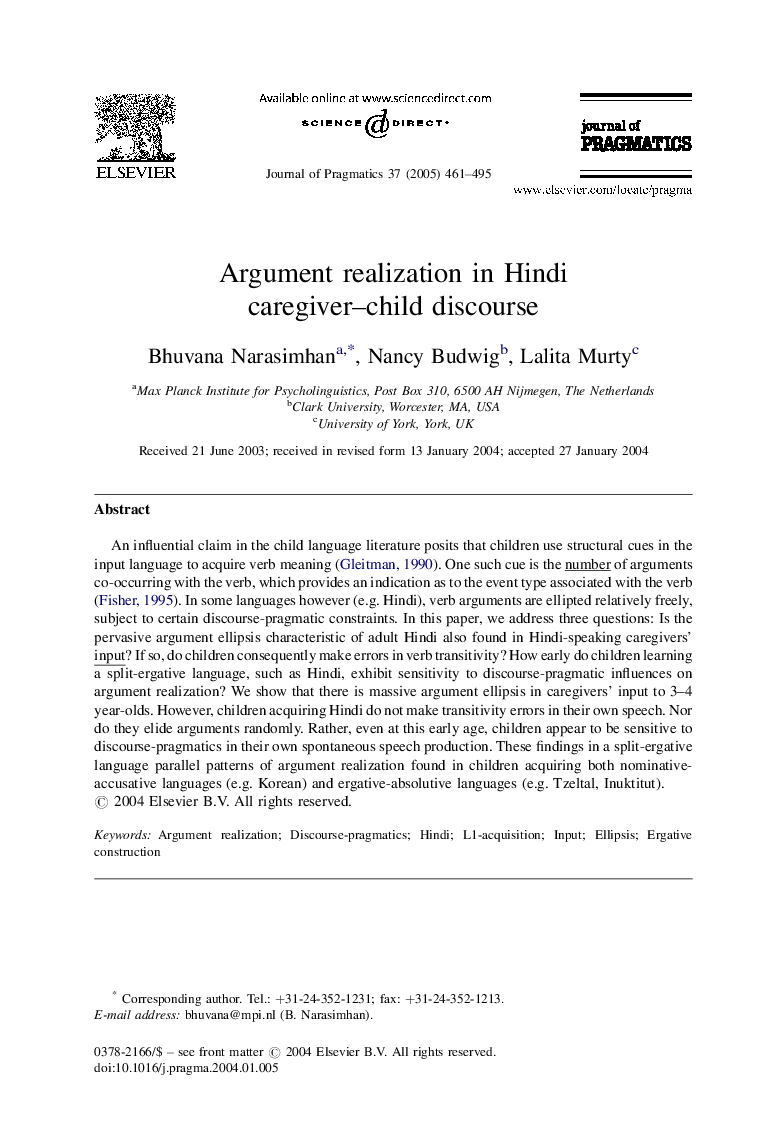| Article ID | Journal | Published Year | Pages | File Type |
|---|---|---|---|---|
| 10460316 | Journal of Pragmatics | 2005 | 35 Pages |
Abstract
An influential claim in the child language literature posits that children use structural cues in the input language to acquire verb meaning (Gleitman, 1990). One such cue is the number of arguments co-occurring with the verb, which provides an indication as to the event type associated with the verb (Fisher, 1995). In some languages however (e.g. Hindi), verb arguments are ellipted relatively freely, subject to certain discourse-pragmatic constraints. In this paper, we address three questions: Is the pervasive argument ellipsis characteristic of adult Hindi also found in Hindi-speaking caregivers' input? If so, do children consequently make errors in verb transitivity? How early do children learning a split-ergative language, such as Hindi, exhibit sensitivity to discourse-pragmatic influences on argument realization? We show that there is massive argument ellipsis in caregivers' input to 3-4 year-olds. However, children acquiring Hindi do not make transitivity errors in their own speech. Nor do they elide arguments randomly. Rather, even at this early age, children appear to be sensitive to discourse-pragmatics in their own spontaneous speech production. These findings in a split-ergative language parallel patterns of argument realization found in children acquiring both nominative-accusative languages (e.g. Korean) and ergative-absolutive languages (e.g. Tzeltal, Inuktitut).
Related Topics
Social Sciences and Humanities
Arts and Humanities
Language and Linguistics
Authors
Bhuvana Narasimhan, Nancy Budwig, Lalita Murty,
